(D'Orbigny, 1839)
(D'Orbigny, 1839)
|
The South American ampullarid Pomacea insularum is classified under the canaliculata complex. This is a groups af very closely related species which are very variable in size and appearance.
Shell:
The shell of this apple snail species is globose and relatively thick (especially
in older snails) with a low spire. The 4 to 5 whorls are separated by a sligthly
indented suture. The shell opening (aperture) is large and oval to round, sometimes
ligthly reflected. The umbilicus is large and deep. The size of these shell
varies from 25 to 40 mm wide and 30 to 47 mm high depending on the conditions.
The shell is yellow-brown to yelow-live in colour with a dark banding pattern.
Operculum: The operculum is moderately thick and corneous. The structure
is concentric with the nucleus near the centre of the shell. The operculum can
be retracted in the aperture (shell opening).
Body: The body has a grey-brownish colour with dark pigment spots.
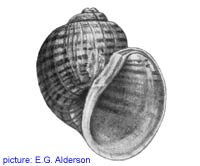 Pomacea insularum. (picture not licenced under creative commons) |
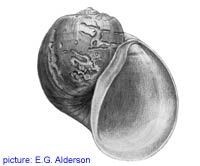 Pomacea insularum. (picture not licenced under creative commons) |
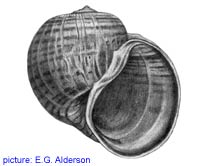 Pomacea insularum. (picture not licenced under creative commons) |
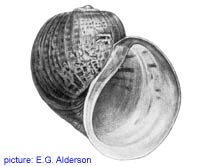 Pomacea insularum. (picture not licenced under creative commons) |
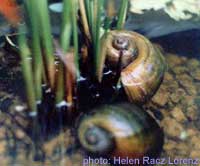 Pomacea insularum. (picture not licenced under creative commons) |
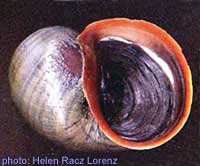 Pomacea insularum. (picture not licenced under creative commons) |
Reproduction:
Eggs: Pink eggs, deposited above the water level (up to 1m.)
|
|
Food: Eats almost all types of vegetation.
Behaviour:
Personal experiences with Asolene puelcha by Helen Racz Lorenz (http://moluscos.net/comer/hrl/):
Pomacea insularum deposits the eggs on plants and rocky walls, at a respectable
distance of the water level, up to even 1 meter above the surface in areas where
water level regularly increases considerably.
It is a nice apple snail, of attractive appearance, both in shape as well in
colour. The shell is thick and solid. An adult specimen can reach between 70/
90 mm. The shell mouth is bright orange colour and has a strong calcareous operculum.
The egg clutches are big and consist of 500 to 700 small eggs. The attractive
and pink "parcel" hangs on the plants and rocky walls during the summer,
this provides the lagoon a picturesque touch of pink flowers.
They are easily grown in captivity, although (of course) they prefer to reproduce
in freedom. So they go away from the fish-globe, (where they are), they fall
themselves on the ground and move a few metres reaching a place that they consider
safe, (although there is any water there) and once there, they sprawn. This
behaviour indicates that to keep our insularum happy or fairly pleasant in captivity,
the height of the wall of our fish globe above the level of water should be
at least 50 to 60 cm.
They eat variety of green vegetables. It is also important in this species to
provide them enough calcium for a correct growth.
Habitat and distribution: Pomacea insularum inhabits an area from
the Islands of Parana, La Plata to Bolivia. And recently, Pomacea insularum
has spread to Thailand, where is causes a similar treat to the food production
as Pomacea canaliculata does.
Looks similar to:
Not surprizingly Pomacea haustrum is very similar to other members of
the canaliculata
complex. It can be hard to distinguish from Pomacea lineata
(Spix, 1827), Pomacea haustrum (Reeve,
1856) (habitat: Manaron branche of the Amazon and Southern Bolivia), Pomacea
sordida (Swainson, 1822) and Pomacea
canaliculata (Lamarck, 1819).
Especially comparable with Pomacea haustrum,
but insularum is rougher and heavier.
|
Except where otherwise noted, this page is licensed under a Creative Commons Attribution-NonCommercial-ShareAlike 2.5 License . http://www.applesnail.net |
|